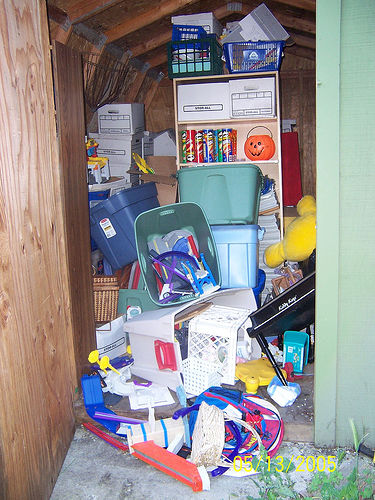When I first moved into a house with my dear friend Karen Longshore, she insisted upon organizing our bookshelves by cuteness. The cute books go on the shelves in the living room, while the uglies are cloistered in my bedroom.
Old Girl Scout Handbook, Intermediate Program: CUTE.
Pat Calfia’s neon orange and black Public Sex : UGS.
1965 edition of Sexual Inversion : CUTE.
Svenonious’s Intellectual Foundation of Information Organization: CUTE.
Taylor’s The Organization of Information: GROSS.
I felt my librarian sensibilities deeply compromised. Before moving in with Karen, I lived alone and had my own Anne Simmons system of arranging things loosely by subject and personal association, like FICTION or UNDERGRADUATE BOOKS. Despite a reverence for aesthetics, I felt that having the books in order created its own beauty, even if Suze Orman rested next to Ed Tufte (AUTHORS WITH SEMINARS). Alas, when one finds oneself at the intersection of professional proclivity and home decorating, it is often useful to ask “What would Martha Stewart do?”
Not only is Martha Stewart the pinnacle of stern lovliness–a quality many a librarian seeks to embody–she also has a lot to say about libraries (did anyone see when NYPL’s LeClerc was on her show?). In her latest reference work, Martha Stewart’s Homekeeping Handbook: The Essential Guide to Caring for Everything in Your Home, she devotes an entire chapter to the keeping of one’s home library. The chapter is divided into two sections, “Layout Basics” and “Repairing Books.”
Her tips range from the mundane (a “do:” “Use bookmarks. Don’t lay books face down.” a “don’t:” “Don’t write in your books.”),
to the unexpected but helpful (“Stack large or heavy books in piles, don’t stack them so high, however, that reaching for the bottom books will cause the pile to topple”),
to Florence Flood-style absurdity, (“If books are muddy, hold them closed and rinse them”).
And check out this good thing I saw on her site: Linen Dust Shields. A technique used in old Swedish libraries (what is it with Swedish Libraries?) which, in addition to protecting volumes from dust, gives a “neat appearance to uneven volumes.” Oh dear! Even on the cute shelves my books were uneven. Now that I know about Linen Dust Shields my library can have the utilitarian off-site-storage quality its been missing. Thanks Martha!




 Posted by annesimmons
Posted by annesimmons 